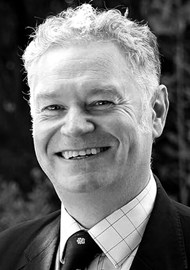In this series of articles I am going to show you some of the exhibits contained in the Museum of Urology, hosted on the BAUS website (www.baus.org.uk).
It is not often we get to say someone in urology has something in common with Albus Dumbledore from the Harry Potter books and films. So, when I came across this (admittedly somewhat tenuous) link I thought it an excellent opportunity to task Ak Kishor, urology trainee in Leicester, to find out more about Dr Jean Casimir Félix Guyon, 19th century Parisian urology, the birth of the Societé Internationale d’Urologie (SIU) and chocolate frogs

Figure 1: Original Potin Card of Felix Guyon from an original
photograph by Pierre Lanith Petit (1832–1909). 1898-1908.
Born in Saint-Denis on the East African island of Reunion, a French overseas department east of Madagascar, on 21 July 1831, Jean Casimir Félix Guyon (1831–1920 – Figure 1) moved to France with his family at the age of three, first to Cherbourg then to Nantes. He studied medicine at the University of Paris, working initially in Nantes then in Paris where he was an intern in 1854, a prosector in 1858 and where he got his doctorate in 1858 (for a dissertation on the uterus). He then went on to become Médecin des Hôpitaux (consultant) in 1864. Thirteen years later he was the Professor of Surgical Pathology and then another 13 years later Professor of Genitourinary Surgery at the University of Paris; it would seem 13 was his lucky number!
On 9 July 1867, Guyon succeeded Jean Civiale (1792–1867), the man who first successfully performed blind lithotrity, at the Necker Hospital in Paris. In 1824, Civiale had specifically allotted beds purely for urology patients at the Necker, creating, some would say, the first urology department. Guyon, by becoming the first Professor of Urology in the world and re-naming the department, Service d’Urologie, consolidated that and has become known as the father of modern urology.
Guyon’s urology clinics were attended by students and doctors from across the world, all learning about the ‘new’ specialty of urology. His trainees read like a ‘Who’s Who’ of famous urologists and included, Fernand Cathelin (1873–1945) who became Chef de Clinique under Guyon and later Chief Surgeon at the Hôpital d’Urologie, Joaquin Albarran (1860–1912) who succeeded Guyon as Chief of Urology at the Necker, Petre Herescu (1868–1915) who opened the first urology clinic in Romania, Félix Legueu (1863–1939), a subsequent SIU President, Ernest Desnos (1852–1925) and Alfred Pousson who were both instrumental in persuading Guyon to establish the SIU. The famous German urologist Jacob Israel (1846–1928) said of Guyon, “all the urologists of the world were his pupils”.

Guyon was made President of the Socitété de Chirurgie in 1878, of the Académie de Médecine in 1896, and of the Académie des Sciences in 1913. In 1896 Guyon founded the Association Française d’Urologie and in 1907, along with urologists from around the world helped to establish the Association Internationale d’Urologie (now the SIU). Guyon was its first president from 1907–1914. In 1911, Felix Guyon was nominated for the Nobel Prize, although he did not win it. At the 18th Congress of the SIU in 1979, held once again in Paris, Guyon was honoured, by being portrayed on a French postage stamp. Clearly a hard worker and high achiever (like Dumbledore!), Table 1 contains some of the eponyms associated with Guyon (Figure 2).

Figure 2: Set of Guyon catheters, Instrument Catalogue, Gentile of Paris, 1905.
So, back to chocolate frogs and my tenuous link with Dumbledore. In the Harry Potter books and films, the children buy chocolate frogs, included with each is a trading card of a famous witch or wizard. These are similar to cigarette cards, given out in packets of cigarettes from the 1870s until the 1940s (and chewing gum cards in the USA). Originally used to stiffen the paper packaging they soon became an ingenious marketing tool, thousands were produced with images as obscure as ‘Abbeys and Castles’, ‘Football Teams’ and ‘How to hold a Guinea Pig’. They were issued in series to encourage people to ‘get the set’ and thus, buy more cigarettes (or chocolate frogs). So, I was very pleased, whilst researching online, to find there were also real chocolate cards and furthermore, some were of famous doctors. The cards were issued with packets of Potin’s Chocolate in France from 1898 to 1922. Jean-Louis-Félix Potin (1820–1871) was a French businessman who opened his first shop in 1844. He established a successful business model, bulk buying, manufacturing, and packaging in his own factories and then selling the goods cheaply in his own shops (similar to the Woolworth’s ‘Five and Dime’ model of 1879). The chocolate cards, with photographs of famous people from monarchs to sport stars, were issued in three series: 1520 different cards in total. The first series (1898–1908) includes several images of Felix Guyon (Figures 3 and 4). I told you it was a tenuous link!

Figure 3: Original Potin Card of Felix Guyon from an original photograph
by Gaspard-Félix Tournachon (1820–1910), AKA Nadar. 1898-1908.

Figure 4: Original Potin Card of Felix Guyon from an original photograph
by Gaspard-Félix Tournachon (1820–1910), AKA Nadar. 1898-1908.
Nevertheless, my Potin Chocolate Cards have allowed us to highlight the life and work of Jean Casimir Félix Guyon, certainly the father of French urology and arguably the Godfather of international urology.






